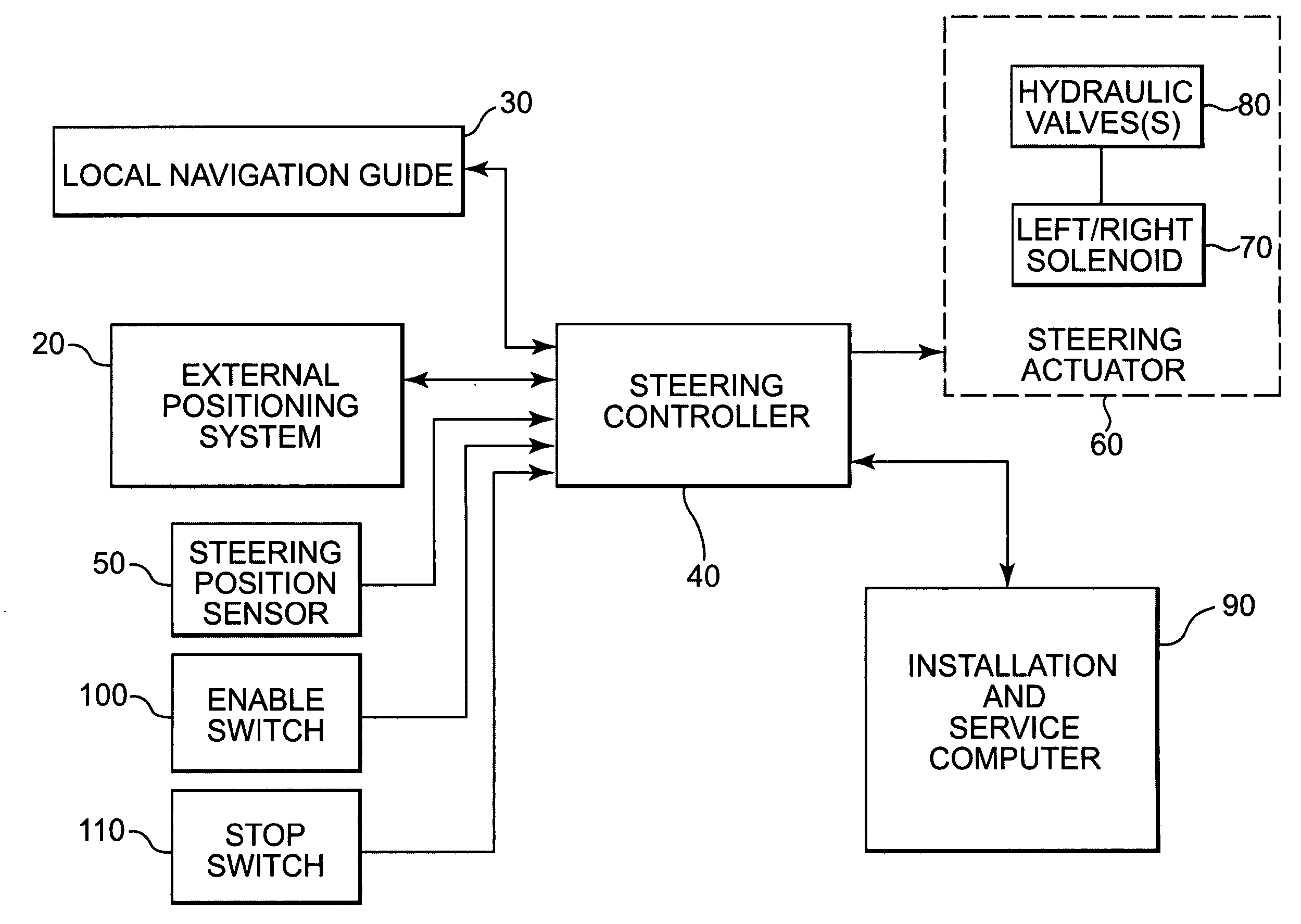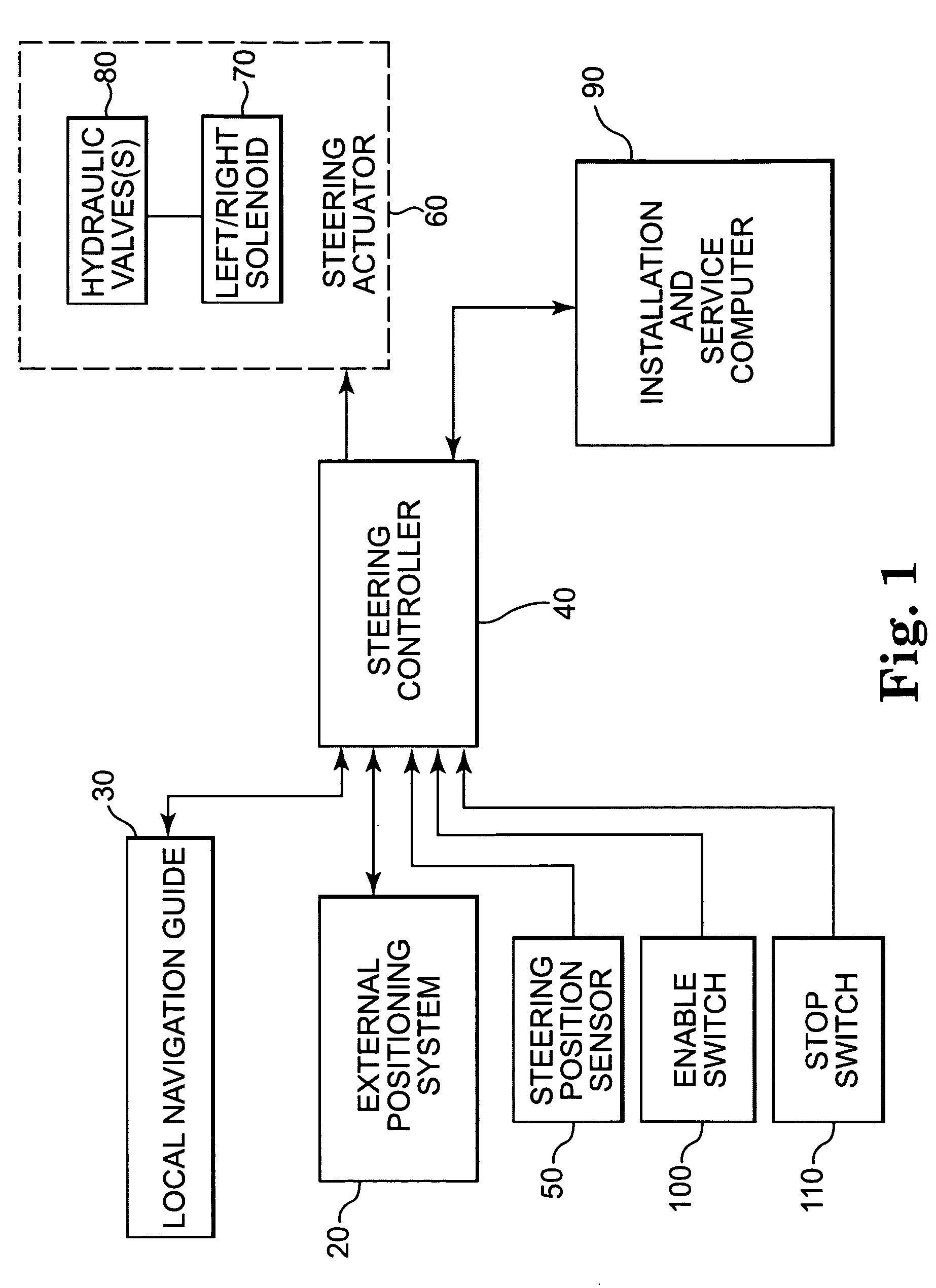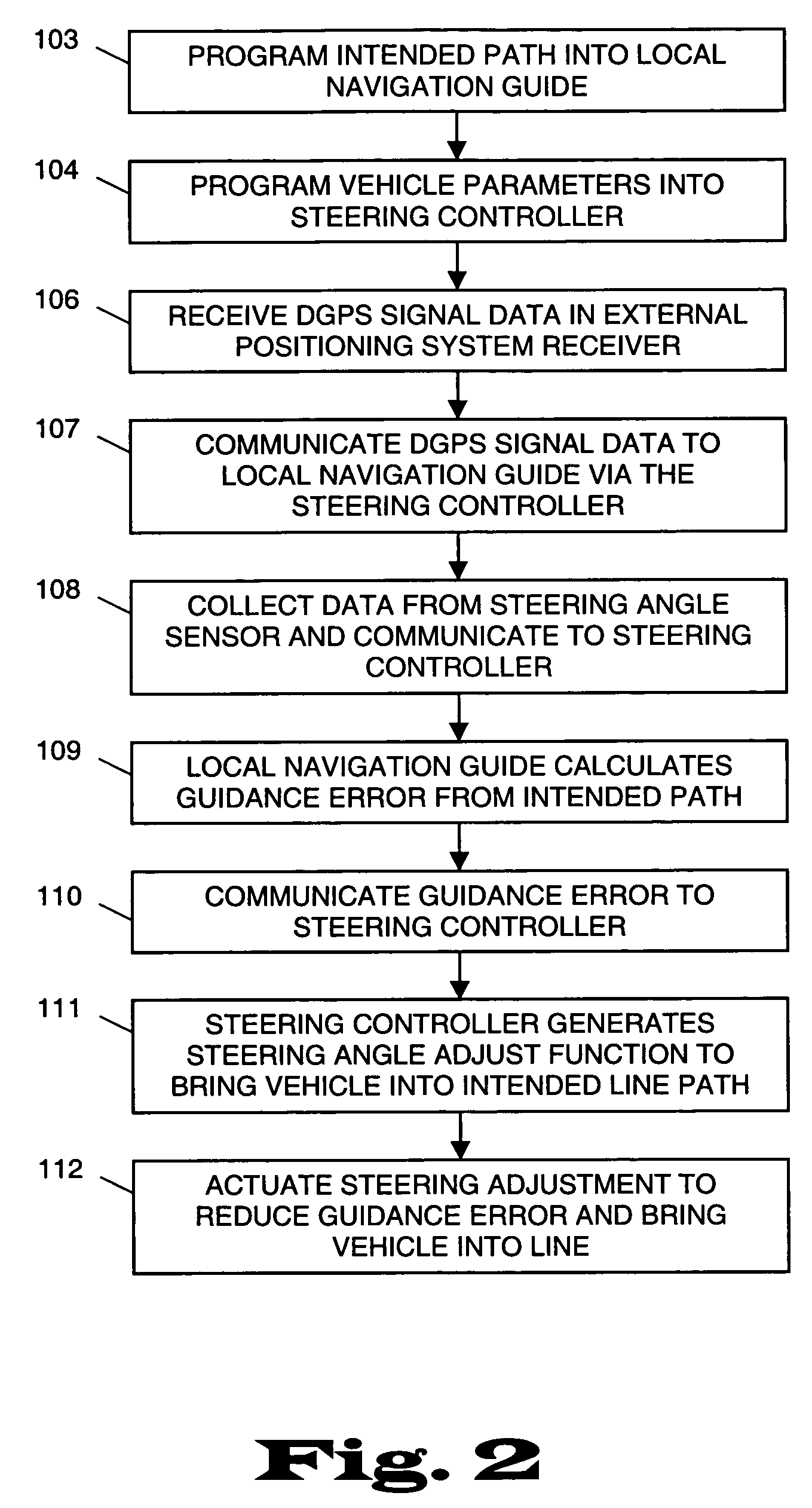Architecturally partitioned automatic steering system and method
an automatic steering and architecture partitioning technology, applied in the direction of non-deflectable wheel steering, underwater vessels, special data processing applications, etc., can solve the problems of unpartitioned units not allowing for safety warnings and/or indications, unpartitioned units also failing to provide maintenance and/or replacement of individual system elements, etc., to achieve maximum performance and ease of variation in system configuration
- Summary
- Abstract
- Description
- Claims
- Application Information
AI Technical Summary
Benefits of technology
Problems solved by technology
Method used
Image
Examples
Embodiment Construction
[0028] With reference to the accompanying Figures, there is provided a method and system for automatically steering a vehicle along an intended target path, wherein the system elements are architecturally partitioned within the system.
[0029] It is understood that the embodiments of the inventive system and methods disclosed herein have broad applicability to steerable vehicles generally including, inter alia, vehicles with at least one steerable wheel and vehicles with at least one steerable rudder or other steerable mechanism such as controllable tracks. Thus, exemplary vehicles that may benefit from application of various embodiments of the invention as disclosed and claimed herein include without limitation, agricultural sprayers, tractors, passenger cars and trucks, all-terrain vehicles, boats, personal watercraft and the like. Specific applications may include agricultural fieldwork such as cultivating, planting or spraying. Maintenance, i.e., mowing, spraying, seeding and aer...
PUM
 Login to View More
Login to View More Abstract
Description
Claims
Application Information
 Login to View More
Login to View More - R&D
- Intellectual Property
- Life Sciences
- Materials
- Tech Scout
- Unparalleled Data Quality
- Higher Quality Content
- 60% Fewer Hallucinations
Browse by: Latest US Patents, China's latest patents, Technical Efficacy Thesaurus, Application Domain, Technology Topic, Popular Technical Reports.
© 2025 PatSnap. All rights reserved.Legal|Privacy policy|Modern Slavery Act Transparency Statement|Sitemap|About US| Contact US: help@patsnap.com



